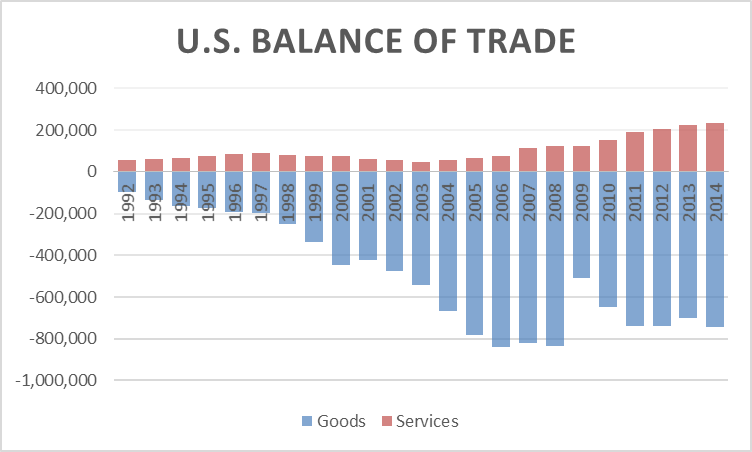Services in the Economy
Services Are Important to the Global Economy and Development
- The 2011 World Development Indicators show that the services sector accounted for almost 71% of global GDP in 2010 and is expanding at a quicker rate than the agriculture and the manufacturing sectors.
- Trade in services has grown at a pace faster than trade in goods since the 1980s. UNCTAD estimated that in 2013 global services exports reached $4.7 trillion and grew at an annual rate of 5%.
- Technology-services create a multiplier effect for overall trade flows: technology-enabled exporters sell to an average of 19 markets, while exporters without access to technology services sell in 3-4 markets.
- World Bank research shows that the services sector has become a dominant driver of economic growth in developing countries, delivering both GDP growth and poverty reduction. In 2011, the services sector accounted for an average 49% of GDP in the low income countries and 47% in least developed countries (LDC).
Services, and Services Trade, Are a Key Component of the U.S. Economy
- The service sector is the largest employer in the US - in 2013, services accounted for 76% of the U.S. work force.
- Even though less than 5% of U.S. service companies currently export, services are almost 30% of total U.S. exports.
- USTR estimates every $1 billion in services sales supports 4,000 jobs in the United States.
- The average annual salary of an individual employed by a firm involved with international services is $60,000. In contrast, the national average manufacturing salary is $40,000.
- In 2013, U.S. service exports were valued at $681 billion, with a $231 billion surplus.

In millions of dollars; data from US Census Bureau
A Strong TiSA Will Benefit the Global and U.S. Economies
- The Trade in Services Agreement (TiSA) will update the structure/rules governing more than 70% of global trade in services.
- There is a major opportunity for growth for U.S. services in international markets. A study by a leading economist found that only 3 percent of services firms export, as compared to a quarter of manufacturers, largely because of foreign barriers. An estimated 3 million jobs could be created if U.S. services matched the export rate of manufacturers. TiSA, by addressing unfair barriers, can help make that happen.
Tags: trade, services, TiSA, international, economy
